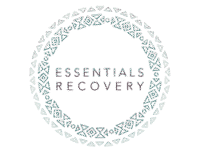Addiction recovery is about more than breaking free from substances—it is also about reshaping how a person thinks, feels, and responds to life’s challenges. Cognitive Behavioral Therapy (CBT) has become one of the most effective approaches in addiction treatment because it focuses on identifying and changing unhealthy thought patterns that often fuel substance use. By developing healthier ways of thinking and behaving, individuals are better equipped to build lasting recovery and embrace a fulfilling life.
CBT is not just a tool for recovery from addiction; it is a versatile therapeutic approach that can address underlying mental health challenges such as anxiety, depression, and trauma. When applied in the context of recovery, it provides a roadmap for breaking the cycle of negative thinking and empowering individuals to take control of their lives.
Understanding the Basics of Cognitive Behavioral Therapy
Cognitive Behavioral Therapy is built on the principle that thoughts, emotions, and behaviors are deeply interconnected. When a person struggles with negative or distorted thinking, it often leads to unhealthy emotional responses and destructive behaviors. For individuals battling addiction, this cycle might look like negative self-talk triggering feelings of hopelessness, which then lead to substance use as a way of coping.
CBT helps individuals identify these thought patterns, challenge their accuracy, and replace them with healthier, more constructive ways of thinking. The goal is not to deny or ignore difficult emotions but to reshape how they are understood and managed in everyday life.
The Connection Between Thought Patterns and Addiction
Addiction is rarely just about the physical dependence on a substance—it often involves psychological factors that keep the cycle of use going. Negative thought patterns such as “I’ll never be good enough” or “I can’t cope without drugs or alcohol” create a sense of helplessness that fuels cravings and relapse.
By addressing these thoughts directly, CBT interrupts the cycle and allows individuals to recognize that they are not powerless over their emotions or choices. For example, learning to challenge the belief “I can’t handle stress without drinking” and replacing it with “I can manage stress using healthier strategies” can dramatically shift recovery outcomes.
How CBT Works in Addiction Recovery
CBT typically begins with identifying specific triggers, thought patterns, and behaviors that contribute to substance use. Therapists then guide individuals in challenging these thoughts and practicing new skills.
Some common CBT techniques in recovery include journaling thoughts and feelings, role-playing difficult situations, practicing relaxation techniques, and using problem-solving strategies. The therapy is highly practical, encouraging clients to apply what they learn in real-life situations, gradually strengthening new patterns of thinking and behavior.
The Role of Self-Awareness in CBT
Self-awareness is a cornerstone of CBT. By learning to recognize thought patterns in the moment, individuals gain more control over their reactions. For example, instead of automatically giving in to cravings after a stressful event, a person trained in CBT might pause, identify the negative thought, and replace it with a healthier response.
This process not only prevents relapse but also builds confidence in the ability to manage challenges without relying on substances. Over time, these small shifts in thinking create significant progress toward lasting recovery.
Addressing Underlying Mental Health Issues
Many people in recovery also struggle with co-occurring mental health conditions such as depression or anxiety. Left unaddressed, these issues can increase vulnerability to relapse. CBT is especially effective because it provides tools to manage both addiction and mental health symptoms simultaneously.
For example, someone experiencing social anxiety might avoid support group meetings due to fear of judgment. CBT helps reframe this fear by challenging the thought that “everyone will criticize me” and replacing it with “others are here for support, just like I am.” By addressing these fears, individuals are more likely to engage in recovery activities that strengthen their sobriety.
Building Healthier Coping Mechanisms
Substances often serve as a coping mechanism for dealing with pain, stress, or trauma. CBT equips individuals with healthier alternatives that reduce reliance on substances. These may include mindfulness practices, relaxation exercises, communication skills, and problem-solving strategies.
As these new coping mechanisms become habitual, the brain begins to associate challenges with healthy responses instead of substance use. This rewiring of thought and behavior patterns strengthens long-term recovery and reduces the risk of relapse.
The Importance of Homework and Practice
A unique aspect of CBT is the emphasis on “homework.” Clients are encouraged to practice the skills they learn during therapy sessions in their daily lives. This might include keeping a thought journal, practicing new coping strategies during stressful situations, or role-playing conversations that might otherwise lead to conflict.
Homework reinforces new skills and creates consistency in recovery. By applying CBT techniques outside of therapy, individuals begin to experience real-world results that reinforce their confidence and commitment to sobriety.
The Flexibility of CBT in Different Settings
Another strength of CBT is its adaptability. It can be used in individual therapy, group sessions, or even family therapy. It is also effective in both inpatient and outpatient treatment programs, making it a versatile approach that can meet the needs of people at different stages of recovery.
In group therapy, CBT often involves practicing communication and conflict resolution skills with peers, creating an environment of accountability and support. In family settings, CBT can help address communication patterns that may contribute to conflict or misunderstanding, allowing the entire household to heal and grow together.
Combining CBT with Other Therapies
While CBT is highly effective on its own, it is often combined with other therapeutic approaches to create a comprehensive treatment plan. For example, mindfulness-based practices can complement CBT by helping individuals stay present and aware of their thoughts. Similarly, medication-assisted treatment can address the physical aspects of addiction, while CBT provides the mental and emotional tools to sustain recovery.
This integrated approach recognizes that addiction is complex and requires attention to multiple dimensions of health and well-being.
Long-Term Benefits of CBT in Recovery
The skills learned in CBT extend far beyond the initial recovery phase. By teaching individuals how to manage stress, regulate emotions, and challenge negative thoughts, CBT provides tools that support long-term well-being. These benefits include improved self-esteem, healthier relationships, and increased resilience against life’s challenges.
Over time, individuals who practice CBT often experience a shift from feeling controlled by their thoughts to feeling empowered to shape their own lives. This empowerment is a crucial factor in maintaining long-term sobriety and creating a fulfilling, substance-free future.
Practical Examples of CBT in Action
To understand CBT in practice, consider a person who struggles with cravings every time they feel lonely. Through CBT, they might first learn to identify the automatic thought: “I can’t handle being alone.” Next, they challenge this thought by asking, “Is this really true?” or “What evidence do I have for this belief?”
Over time, they replace the thought with something more constructive, such as: “Being alone is uncomfortable, but I can use this time to call a friend, read, or engage in a hobby.” By practicing this shift, they break the automatic connection between loneliness and substance use, creating healthier responses.
Challenges in Applying CBT
While CBT is highly effective, it requires effort and consistency. Some individuals may initially resist challenging their thought patterns or feel overwhelmed by the process. It is important to remember that progress takes time and that setbacks do not mean failure.
Therapists play a key role in encouraging patience and persistence. Over time, even small changes in thought patterns can create significant improvements in emotional well-being and recovery outcomes.
Creating a Healthier Future Through CBT
At its core, CBT is about transformation—transforming destructive thought patterns into constructive ones, turning unhealthy behaviors into positive habits, and reshaping life into one filled with hope and purpose. For individuals in recovery, CBT offers both immediate tools for managing cravings and long-term strategies for building a meaningful, substance-free future.
By embracing this therapeutic approach, individuals gain more than sobriety—they gain self-awareness, empowerment, and the ability to create lasting change in their lives.
Embracing Change One Thought at a Time
Recovery is not about perfection but about progress. Cognitive Behavioral Therapy empowers individuals to make small, consistent changes in how they think and respond to life’s challenges. Over time, these shifts accumulate, leading to profound transformation.
Through patience, practice, and persistence, CBT helps individuals not only achieve sobriety but also build the foundation for a healthier, more fulfilling life. The journey begins one thought at a time, and each new thought brings the possibility of lasting recovery. Call us today at 855-509-1697.



